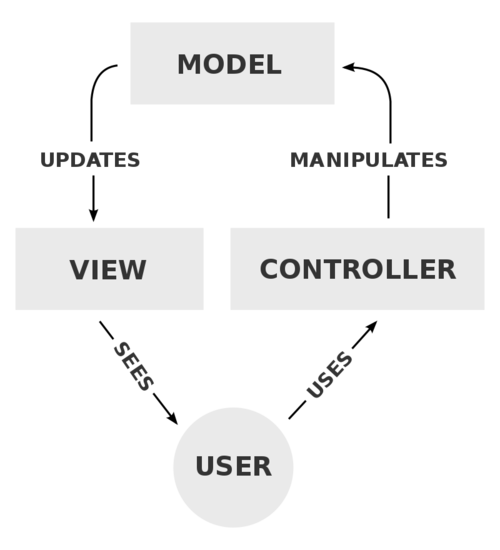Model View Controller (MVC) - Runtime Terror
Introduction
The model view controller paradigm (way of programming) enables for a great programming experience for everyone working on the codebase (all the code that runs an application). The model stores the data and logic, which defines the functions and characteristics of the application for the controller to follow. Therefore, it acts as a database, or data structure. The view is responsible for presenting the model to a user via the user interface, which is many times filled with graphics to visually organize information made available through the model. This makes it possible for the user to interact with the application as the view displays information from the model. This includes the textboxes, images, and buttons on a webpage. The controller is responsible for returning the response to the request from the user. The controller accepts inputs from the user and converts it to command for the model or view. The controller receives the inputs, optionally validates the input from the user and then passes the input to the model. As a result, the controller acts as the middleman that ties the view to the model.
Components
Now, here’s how the model view controller components work together to make a fully-functional application. First, the controller receives the request. Then, the controller interacts with the model to send and receive data. Secondly, the controller then interacts with the view to render the data. Finally, the controller will receive the final presentation from the model component and send that final data produced to the user output made available through the view component.
Advantages of MVC
One way the model view controller paradigm can be useful is because programming teams can take advantage of better code organization and easier distribution of work among the team members. For example, one programmer could take up work on the model component of the project while a few others could work on improving the other components of the paradigm. And best of all, instead of each programmer having to wait to start their work for another to finish theirs, improvements on the model, view, and controller components could be made simultaneously and then merged. This way, a complex project can be divided up into bite-sized, simple tasks, managed effectively, and completed collaboratively, with minimal, if not zero complications.
Another advantage of the model view controller paradigm is the ability to improve specific components without having to significantly alter and sometimes even touch the rest of the project’s components. For example, if a developer is tasked with making slight tweaks to an app’s user interface, they would, in most cases, be able to do so by simply modifying the model component instead of various parts of the entire application.
Conclusion
The model view controller architecture allows for tremendous flexibility and enables better collaboration among teams, which are also reasons why many popular development frameworks such as React, Flask, Angular, and many others use this paradigm.

